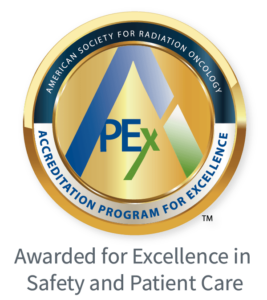Advanced Radiation Therapy for Head and Neck Cancer

At Minneapolis Radiation Oncology, we bring advanced radiation therapy close to home, with 11 locations across the Twin Cities, Brainerd Lakes Area, and Western Wisconsin. Count on the cancer specialists at MRO to be here for you, with care, precision, and compassion.
What is head and neck cancer?
Head and neck cancer is an umbrella term used to define cancer that develops from the throat up, including salivary, tonsil, tongue, thyroid, laryngeal, pharyngeal, sinus, and adenoid cancers, as well as their subtypes. Overall, it is relatively rare, accounting for about 4% of all cancers in the United States.
“Our goal is to provide the best treatment possible for each patient using state-of-the-art technology combined with personal care and attention. We aim to treat each patient as if they were a family member, by informing and supporting them throughout their treatment and beyond.”
Kurt Nisi, MD
MRO | North Memorial
An increased awareness of major risk factors, along with technological advances in detection, has led to a decline in incidence rates in recent years.
Head and neck cancers are more common in men than women, and they are overwhelmingly linked to tobacco use. Most people are older than 50 when they are diagnosed. Research and prevention efforts have also helped more patients survive and improve their quality of life during and after treatment. But over the past ten years, an increasing number of younger, non-smokers with Human Papilloma Virus (HPV) have developed cancer of the tonsils and the back of the tongue.
Two-thirds of oral cancers will be found as late stage three and four diseases.
Head and neck cancers are classified according to the part of the body in which they occur.
Laryngeal cancer: Laryngeal cancer, classified as a throat cancer, is one of the most common forms of head and neck cancer. Patients with laryngeal cancer often need voice rehabilitation after treatment to learn how to speak again.
Hypopharyngeal cancer: The hypopharynx is the lower part of the throat, which surrounds the larynx; hypopharyngeal cancer is classified as a type of throat cancer.
Nasal cavity and paranasal sinus cancer: Nasal cavity cancer is a rare type that forms in the space just behind the nose, where air passes on its way to the throat. This type of cancer may also develop in the paranasal sinuses that surround the nasal cavity.
Salivary gland cancer: The salivary glands produce the saliva responsible for breaking down food. Salivary gland cancer is uncommon.
Oral cancer: The oral cavity includes the lips, inside lining of the lips and cheeks, teeth, gums, front of the tongue, floor of the mouth, and the roof of the mouth. It is the ninth most common cancer among men.
Oropharyngeal cancer: Oropharyngeal cancer forms in the part of the throat just behind the mouth, including the base of the tongue, the back of the roof of the mouth, tonsils, and the side and back walls of the throat.
Thyroid cancer: There are several different types and subtypes of cancer that affect the thyroid gland, which helps regulate your metabolism, heart rate, blood pressure, and body temperature.
![]()
